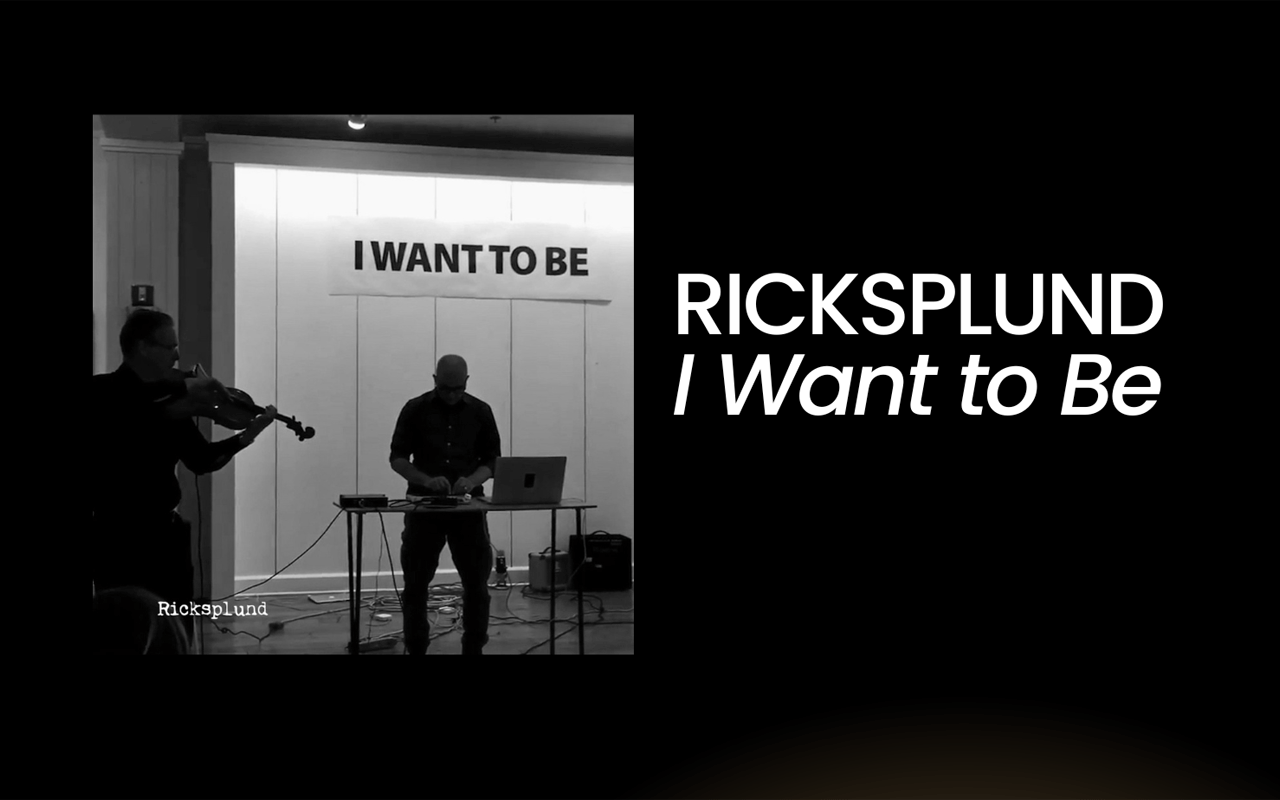
Self-released, October 2022
Crashing, creaking, and wailing, electroacoustic duo RICKSPLUND’s I Want to Be follows Steven Ricks and Christian Asplund down a rabbit hole of radical sound and thought. These prodigious modern composers are a natural pairing who create memorably unnatural music, filtering each other’s acoustic improvisations through a maze of digital effects.
By prodigious, I mean that Ricks and Asplund—both educators at Brigham Young University—have penned dozens, perhaps hundreds of musical scores for chamber and orchestral groups around the world. Asplund received his doctorate in composition at the University of Washington and was long a star of the Northwest avant-garde set. (Fans of grunge rock, he said admiringly, were more open to experimental art than were symphony patrons.
In Ricks, Asplund has found a match for his sensibilities. I Want to Be, the duo’s debut, alternates track-by-track between Asplund’s viola (or violin) and Ricks’ trombone. What Asplund plays on his strings, Ricks modulates with his electronics rig. Vice versa when Ricks picks up the brass.
Thanks to this rather unique format, listeners experience not only the artists’ differing acoustical sensibilities but also their digital leanings, the way each uses filters, reverb, delay, and pitch-shifting to create immense soundscapes from the noise of his partner’s playing. On the instrumental side, Asplund’s extended viola techniques are best witnessed in videos from the “duo’s 2022 performances at Wallingford’s Chapel Performance Space (on YouTube as “RICKSPLUND @ The Chapel”). Asplund fashions fishing line frets near the bridge of his viola, tickles the neck with his fingertips, and at one point uses a sheet of laminate plastic in place of his bow.
These string-centric numbers, for example, the opening “VvioLla 1 – 2022 SC3 Melange Concert,” bring to mind Colin Stetson’s soundtrack for Ari Aster’s 2018 horror classic Hereditary. Indeed, one senses that Asplund alone could whip up the ambiance of Kubrick’s Overlook Hotel. When filtered through Ricks’ electronics, the strings multiply and form an eerie otherworldliness.
Ricks’ trombone numbers, no less impressive, are quite different in tone. After the jazzy, underwater-sounding introduction of “Trrrommmbone 2 – Part 1,” Ricks produces some spectacular bebop-style runs that are manipulated by Asplund into a kind of digitized whirlwind.Ricks has cited Thomas Pynchon’s Gravity’s Rainbow as a primary influence on his art, in particular a scene when protagonist Tyrone Slothrop hears Charlie Parker’s “Cherokee” on a Boston dance floor. Here, amid a throbbing internal monologue, we find what might be the essence of RICKSPLUND: “All those long, long notes…” Slothrop thinks, “what’re they up to, all that time, to do something inside of?”